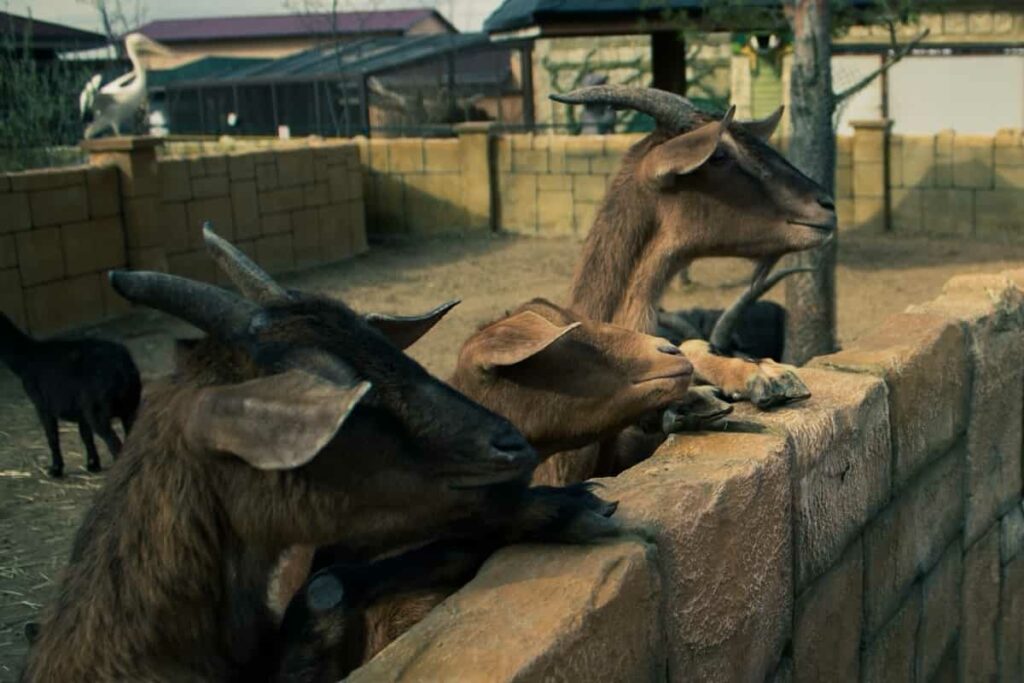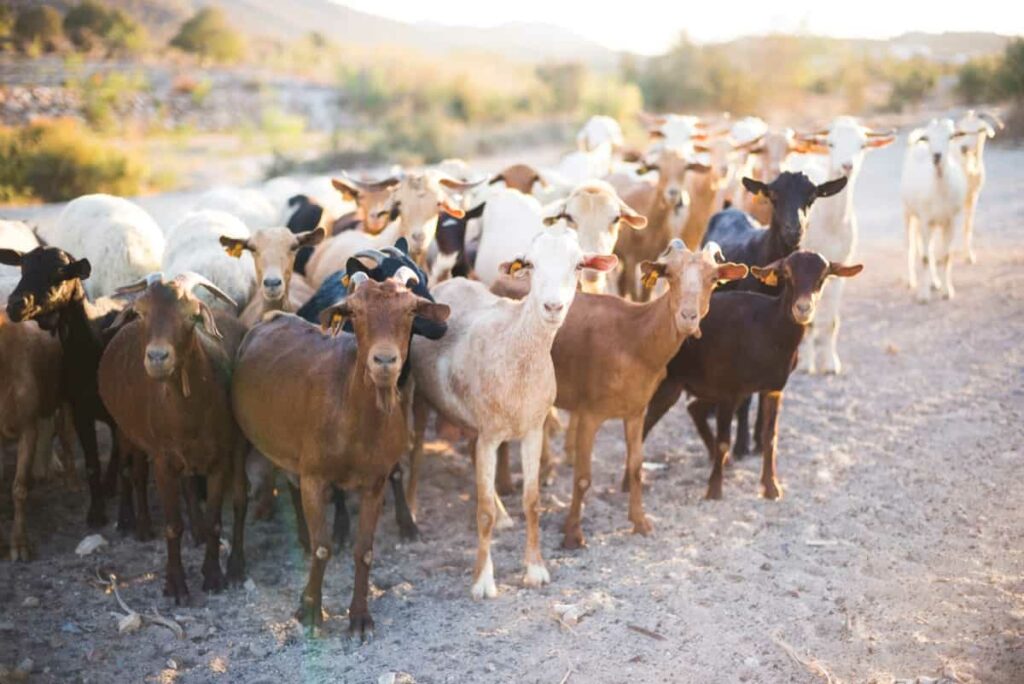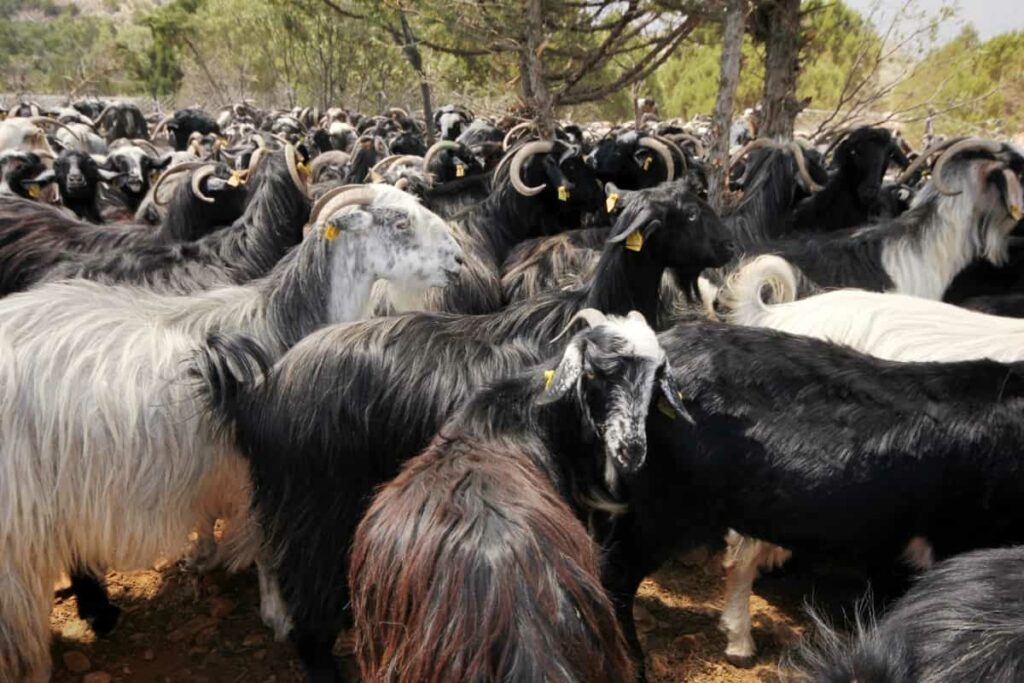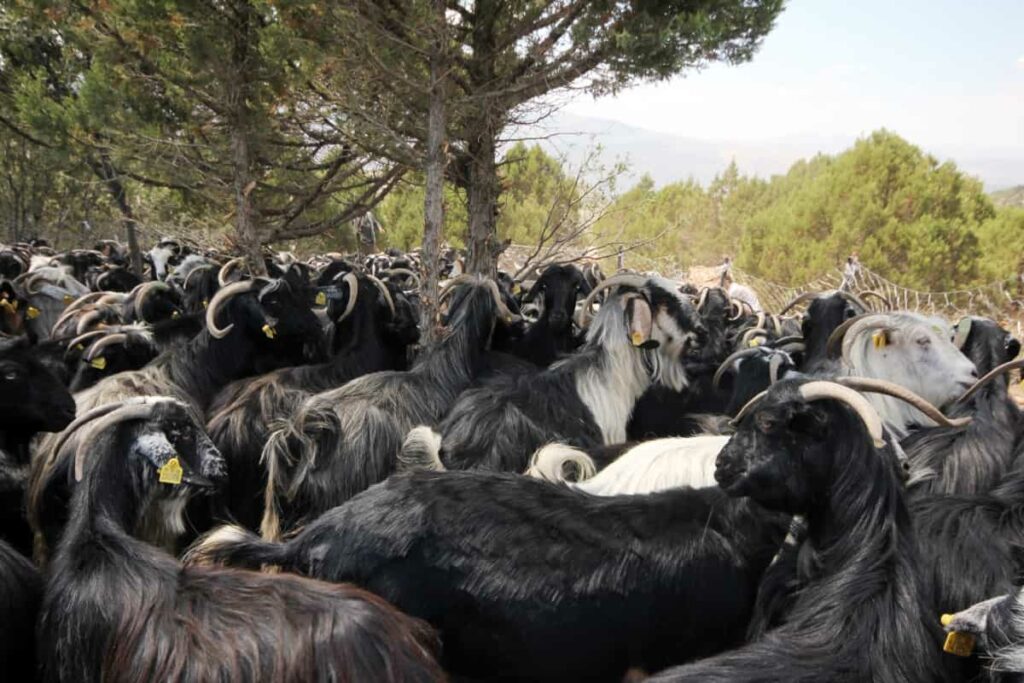Goat farming has become an increasingly popular choice among farmers in the country. Goat farming has become a popular choice for many farmers in Uganda. Goats are versatile animals that can provide both milk and meat, making them a valuable asset for small-scale farmers.

Selecting the Right Goat Breeds for Farming in Uganda: Poupular Goat Breeds in Uganda
East African goat – Known for its adaptability and resilience, this breed can thrive in various environments and withstand harsh weather conditions. They are also known for their high fertility rates and excellent meat quality.
Kigezi breed – These goats are native to southwestern Uganda and are highly valued for their milk production capabilities.
Mubende breed – The Mubende breed is yet another favorite among farmers in Uganda. Originating from the Mubende district, these goats have a good growth rate and efficient feed conversion ratio. This makes them suitable both for meat production as well as crossbreeding programs.
Karamoja, Savannah, and Kalahari – Other breeds like Karamoja, Savannah, and Kalahari have unique characteristics that make them suitable choices depending on specific farming goals or environmental factors.
Choosing the right goat breed for Uganda depends on your farm’s location, climate conditions, market demand, and personal preferences as a farmer.
Setting Up a Suitable Housing System for Goats in Uganda
The right housing ensures your goats’ comfort and well-being, directly impacting their growth and productivity. You need to provide enough space for each goat. Aim for at least 10 square feet per adult goat. Good airflow helps prevent respiratory issues and cool the goats during hot weather. Sturdy fencing around the perimeter is essential to keep these threats at bay. Goats require a clean, dry surface to prevent hoof problems and bacterial infections.
Feeding and Nutrition Management for Goats in Uganda
The right diet ensures your goats’ overall health, productivity, and growth. Goats are natural foragers and can thrive on a variety of vegetation. However, it’s important to supplement their diet with additional nutrients. In Uganda, common feed sources for goats include grasses, shrubs, legumes, and tree leaves.
In case you missed it: Innovative Housing and Shelter Designs for Profitable Goat Farming

Proper feeding schedules should be maintained to meet the nutritional requirements of different age groups. Remember that overfeeding the goats can lead to obesity and health issues while underfeeding results in poor growth rates and reduced productivity. So, strike a balance by providing quality feed in appropriate quantities based on individual goat needs.
Breeding and Reproduction Practices for Goats in Uganda
Proper breeding ensures the growth and sustainability of your goat farm. Selecting the right bucks for mating is essential. It is important to choose healthy and genetically superior males that can pass on desirable traits to their offspring. Breeds like the East African goats, Kigezi breed, Mubende breed, Karamoja, Savannah, and Kalahari are popular choices for breeding in Uganda.
Proper timing is crucial for successful reproduction. Female goats or does go into heat every 21 days during the breeding season. Identifying and introducing these signs to the selected buck at the right time is important. Proper goat nutrition plays a significant role in successful reproduction.
Monitoring pregnancy progress closely is vital to conducting regular check-ups on pregnant women. By implementing effective breeding practices and focusing on good genetics and proper nutrition management, farmers can maximize their chances of producing high-quality offspring that will contribute positively to their goat farming business in Uganda.
Health and Disease Management in Goat Farming: A Focus on Uganda
Ensuring your goats’ health is vital for a successful goat farming venture in Uganda. You can prevent outbreaks and protect your herd by implementing proper disease management practices. Regular vaccinations safeguard against common diseases such as Peste des Petits Ruminants (PPR) and Foot-and-Mouth Disease (FMD). Maintaining a clean and hygienic environment also helps minimize the risk of spreading infections.
Regular check-ups by a veterinarian should be scheduled to monitor the overall health of your goats. It is important to promptly address any signs of illness or abnormalities observed among the animals. Early detection plays a significant role in preventing potential outbreaks from spreading throughout the entire herd. Proper nutrition also contributes to maintaining good health in goats.
Managing Goat Milk Production and Dairy Products in Uganda
Goat milk is not only highly nutritious but also has numerous health benefits. In Uganda, goat milk production has gained popularity due to its high demand in the market. It is important to ensure proper nutrition for the goats. Maintaining good hygiene practices during milking is crucial. The udders should be cleaned thoroughly before each milking session to prevent contamination.
In case you missed it: Surviving the Heat: The Impact of Climate Change on Goat Farming

Milking equipment should also be sanitized properly to avoid bacterial or fungal infections. Furthermore, regular health check-ups for the goats are essential. Proper storage of goat milk is another important aspect. Cooling the milk immediately after milking and storing it at low temperatures is necessary to maintain its freshness and nutritional value.
Goat Meat Production and Marketing Strategies in Uganda
Proper feeding practices should be implemented to maximize profitability in goat meat production. A balanced diet of grains, hay or fodder crops, and mineral supplements will help promote healthy weight gain in goats. Marketing strategies play a crucial role in selling goat meat products effectively.
Identifying potential customers such as restaurants, hotels, supermarkets, and individual consumers who prefer organic or locally sourced meats is important. Additionally, promoting your farm through social media platforms like Facebook or Instagram can help create awareness about your products amongst potential customers.
Financial Planning and Profitability Analysis for Goat Farming in Uganda
Financial planning and profitability analysis involve carefully assessing the costs of setting up and running the farm and estimating potential profits. To begin with, you need to budget for various expenses such as purchasing land or renting it, suitable housing facilities, buying quality breeds, hiring labor if needed, veterinary services, feed costs, marketing expenses, and other expenses that may arise .Additionally, keep track of operational costs, including monthly feed expenditures;
Ensure proper record-keeping so that you can analyze your financial performance regularly. By closely monitoring income and expenditure patterns over time, you’ll be able to identify areas where cost reduction is possible or where production efficiency can be improved. Remember that profitability analysis also includes evaluating return on investment (ROI), which considers immediate profits and long-term growth prospects. It’s essential to weigh the initial capital investment against expected returns over an extended period.
Cost to Start a Small-Scale Goat Farming in Uganda
Starting a small-scale goat farming business in Uganda requires careful financial planning. One of the crucial aspects to consider is the initial investment or cost involved.
| Land | 4 million UGX |
| Housing system | 3 million UGX |
| Purchase of goats (20) | 6 million UGX |
| Feeding expenses (first year) | 1 million UGX |
| Veterinary care | 500k UGX |
| Equipment (feeders, waterers) | 500k UGX |
| Total estimated cost | Approx. 15- 20 million UGX |
To set up and establish your goat farm, you should budget around 15 million to 20 million Uganda shillings. This budget will cover various expenses such as purchasing high-quality goats, constructing suitable housing systems, procuring necessary equipment and supplies, and ensuring proper animal healthcare.
Additionally, allocating funds for feed and nutrition management and marketing strategies is essential. Investing in good quality goats is vital for a successful venture. The cost of goats can vary depending on their breed, age, and health condition. It’s advisable to select breeds that are well-suited to the Ugandan climate and have good milk or meat production potential.
In case you missed it: How to Find Goat Farm Near You: Simple Tips and Ideas for Your Location Search

Table of Starting a Goat Farm in Uganda
| Goat Raising Parameters | Goat Farming Management |
| Goat Raising Purpose | Milk, meat, fiber |
| Popular Goat Breeds in Uganda | East African goats, Kigezi breed, Mubende breed, Karamoja, Savannah, Kalahari |
| Housing System for Goats | At least 10 square feet per adult goat |
| Feeding and Nutrition Management | Feed sources include grasses, shrubs, legumes, and tree leaves |
| High Milk and Meat Production | Maintaining good hygiene practices, Proper vaccinations, and proper feeding practices |
| Popular Choices for Goat Breeding | Savannah, Kalahari, East African goats, Karamoja |
| Disease Management in Goat | Common diseases like Peste des Petits Ruminants (PPR) and Foot-and-Mouth Disease (FMD) |
| Cost to start a goat farming business in Uganda | 15 million to 20 million Uganda shillings |
| Health Care and Disease Prevention in Goats | Regular check-ups by a veterinarian, Proper nutrition, |
Conclusion
Goat farming is important in Uganda, contributing significantly to the country’s agricultural sector. With its favorable climate and abundant grazing land, Uganda has become ideal for goat farming. One of the key reasons why goat farming is important in Uganda is its potential to provide a sustainable income source for farmers.
Goats are known for their high reproductive rates and fast growth, making them profitable investments. Additionally, goats are well-suited to Uganda’s climate and terrain. Goat farming in Uganda is a thriving industry that has gained significant importance over the years.
- Types of Grass Growing for Goat Farm
- How to Train Goats for Milking: A Beginners Guide
- Goat Milking Practices and Equipment: A Beginner’s Guide
- Goat Farming for Fiber: Producing Mohair and Cashmere
- Maximizing Goat Milk Production: Tips for Dairy Goat Farmers
- Goat Farming as a Family Business: Strategies for Success
- Profitable Kenya Goat Breeds for Commercial Dairy and Meat Business
- Unlock the Secrets of Oberhasli Goat: Discover Raising and Management Practices
- Ultimate Guide to Myotonic Goats: Explore Profile to Raising
Thanks for the advice planning to start goat farm project
Woow thanks for information keep up
Thanks for this resourceful information about Goat farming.
I love the information I’m so convinced
Thanks for your help and support concerning goat rearing